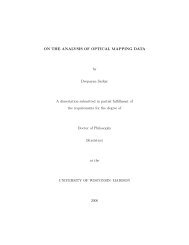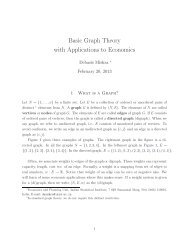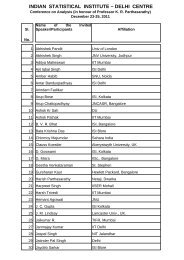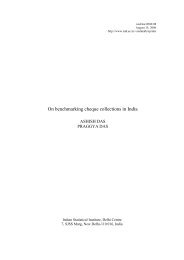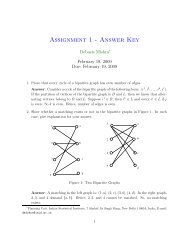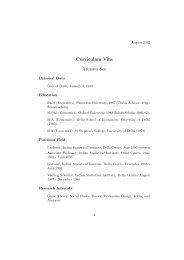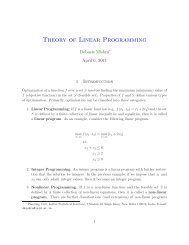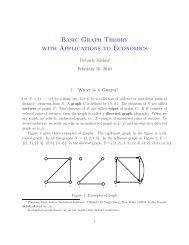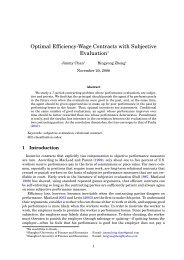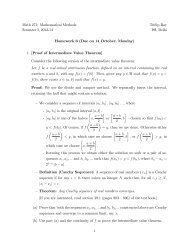Normal approximation to the hypergeometric distribution in ...
Normal approximation to the hypergeometric distribution in ...
Normal approximation to the hypergeometric distribution in ...
You also want an ePaper? Increase the reach of your titles
YUMPU automatically turns print PDFs into web optimized ePapers that Google loves.
S.N. Lahiri et al. / Journal of Statistical Plann<strong>in</strong>g and Inference 137 (2007) 3570 –3590 3579<br />
For notational simplicity, we shall drop <strong>the</strong> suffix r from notation, except when it is important <strong>to</strong> highlight <strong>the</strong><br />
dependence on r. Thus, we write n, M, N for nr,Mr,Nr, respectively, and set p = M/N, q = 1 − p and f = n/N.<br />
We shall use C <strong>to</strong> denote a generic positive constant that does not depend on r. Unless o<strong>the</strong>rwise stated, limits <strong>in</strong> order<br />
symbols are taken by lett<strong>in</strong>g r →∞.<br />
For prov<strong>in</strong>g <strong>the</strong> result, we shall frequently make use of Stirl<strong>in</strong>g’s <strong>approximation</strong> (cf. Feller, 1971)<br />
m!= √ 2e −m+m m m+1/2<br />
where <strong>the</strong> error term m admits <strong>the</strong> bound<br />
1<br />
12m + 1 m 1<br />
12m<br />
for all m ∈ N, (4.2)<br />
for all m ∈ N.<br />
Also note that for g(y) = log y, y ∈ (0, ∞), <strong>the</strong> kth derivative of g is given by g (k) (y) = ((−1) k−1 (k − 1)!)/y k ,<br />
y ∈ (0, ∞), k ∈ N. Hence, for any k ∈ N and ∈ (0, 1),<br />
|g (k) (k − 1)!<br />
(1 + x) |<br />
(1 − ) k<br />
for all 0|x| < . (4.3)<br />
For Lemma 1 below, let X ∼ Hyp(n; M,N) for a given set of <strong>in</strong>tegers n, M, N ∈ N with 1n(N − 1),<br />
1M (N − 1). Let<br />
xk,n =<br />
k − np<br />
√ npq<br />
and ak,n =<br />
xk,n<br />
(1 − f) √ , 0k n, (4.4)<br />
npq<br />
where f = n/N, p = M/N and q = 1 − p. Lemma 1 gives a basic <strong>approximation</strong> <strong>to</strong> Hypergeometric probabilities<br />
solely under condition (4.5) stated below.<br />
Lemma 1. Suppose that X ∼ Hyp(n; M,N) for a given set of <strong>in</strong>tegers n, M, N ∈ N such that<br />
0



